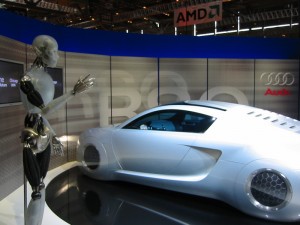 The world we live in runs on technologies that require precious metals, specialty metals, and rare earth elements to operate. Neodymium has magnetic properties used in electric motors; lithium stores energy in our rechargeable batteries; and silver is great at collecting sunlight and transforming it into renewable energy. If these elements, precious and specialty metals aren’t components, than they are the driving forces for developers looking for alternatives to replace them.
The world we live in runs on technologies that require precious metals, specialty metals, and rare earth elements to operate. Neodymium has magnetic properties used in electric motors; lithium stores energy in our rechargeable batteries; and silver is great at collecting sunlight and transforming it into renewable energy. If these elements, precious and specialty metals aren’t components, than they are the driving forces for developers looking for alternatives to replace them.
2014 has seen an abundance of technologies transition from developmental stages, to prototypes, and into mass-produced consumer goods. Here is a quick look at some of the most ground-breaking technological advances and the materials that make them function.
- Back in May, a renewable energy start-up company named Solar Roadways released a concept that broke some crowdfunding records proposing the use of solar panels on roadways. In the Netherlands, a company named SolaRoad opened the first stretch of publicly accessible roadway using the same basic concept proposed by Solar Roadway. Though the silver-laden solar panels are not the most efficient means of capturing energy, it has common roadways serving a secondary purpose that is beneficial to communities.
- Institutions, developmental companies, and investors such as Bill Gates, Lockheed Martin, Lattice Energy, and the Lawrence Livermore National Laboratory have been researching new means of energy generation techniques using low-energy nuclear reactors (LENR). These reactors create the large quantity of energy we are accustomed to without the vulnerabilities of nuclear fission. Most designs operate on palladium and/or gold.
- Thanks to some of these advancements and processes, researchers and developers at Lattice Energy and Toshiba Heavy Industries have uncovered a transmutation of metals that turns radioactive waste into rare earth elements, and non-ferrous into precious metals. Reportedly, alchemists at Blue Eagle Refinery claim to have taken glass and microwaved it into gold.
- But given the high-demand for precious metals such as gold and silver, scientists are working on alternative materials to replace precious metals, and in turn, maintain their marketability. Back in March, a company based in Lichtenstein, Germany, released a sports car design named the “Quant e” that operates on a flow cell battery that uses sea water as its energy source. As skeptics began questioning the practicality and effectiveness of the design, the U.S. Navy released its own report on a similar process they had developed.
- At the top of the charts for consumers, were electric cars like the Tesla and Elon Musk. Many other car manufacturers are following their lead including Volkswagen Group, Ford, BMW, Hyundai, Mitsubishi, Mercedes Benz, and Nissan by manufacturing short-range electronic vehicles. The success of these vehicles are hinged on Lithium supplies and the environmental impact.
These are just a few examples of new technologies that were at the forefront of 2014. Companies and other new start-ups will continue to invest and develop new concepts for technologies we use as consumers and for the greater good. It will be interesting to see as time passes how these technologies coincide with the precious metals market.

















